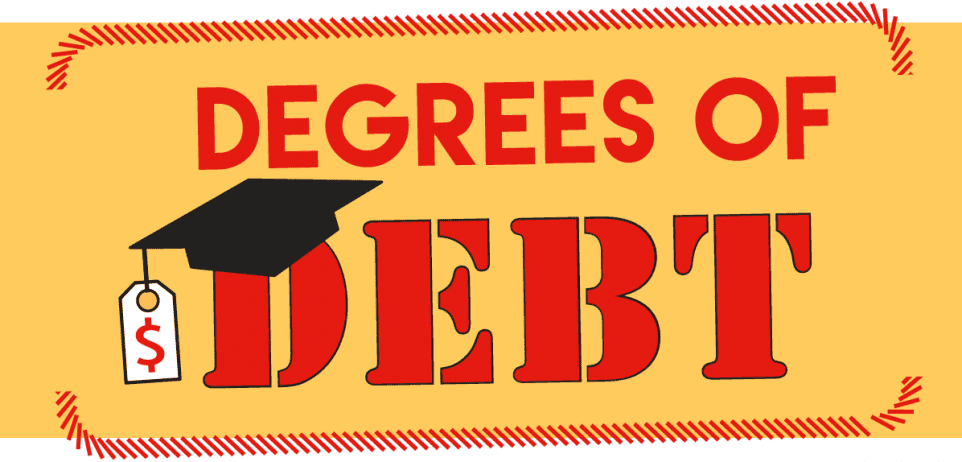“Degrees of Debt: What to Do About Rising College Debt in Texas” is a three-part data series by the Center for Public Policy Priorities. Part 1/3
Part 2: Don’t Forget Financial Aid for Non-Traditional Students
Part 3: College Students Left to Fend for Themselves as State Support Declines
Postsecondary education is critical for driving prosperity for Texas families. Increasingly, well-paid jobs available in Texas require more than a high school diploma. For more Texans to become qualified members of the workforce and sustainable earners for their families, more students of all backgrounds need access to a postsecondary education. The state has an important role to play to ensure college affordability, and it’s critical that we invest in higher education access now to ensure prosperity for all Texans in the future.
In 2015, the Texas Higher Education Coordinating Board adopted the 60x30TX plan, which aims for 60 percent of Texans aged 25-34 to receive a college degree or postsecondary credential by the year 2030. CPPP supports this ambitious goal, but so far the data show we are not on track to meet it.
Since 2000, the state has been slowly divesting from Texas colleges and universities. In 2003, the Texas Legislature voted to deregulate tuition, allowing colleges and universities to charge Texas families unlimited tuition. This divestment, coupled with deregulation, has led in part to steady tuition increases at public colleges and universities to make up for the deficit created by decreases in state funding.
While the state has been investing less and less in Texas colleges and universities, the average annual tuition for a Texas university student doubled from 2000 to 2015. After a decade of declining state support for public universities, students and their families began paying more in tuition and fees ($6,667) than the state provided in funding ($6,276 per student). The year 2010 was the first time that students and their families paid more than the state provided, and that continues today. The gap between state and student investment in colleges and universities grew to a difference of more than $3,000 per year in 2015. year in 2015.[i]

Community colleges are not immune from the trend of higher costs for students and their families. Tuition and fees per community college student grew 35 percent from 2006 to 2016 (from $1,490 to about $2,018 per student). Community colleges, however, are special in that they depend on local property taxes as an important source of revenue. State appropriations and property taxes were nearly equal sources of funding for community colleges in 2005. However, as state investment began to decline, community colleges started to rely more on other sources of income to make up the difference. As a result, local property taxes have become the primary source of revenue, increasing 47 percent since 2005 while state support has fallen by 17 percent in the same period.

While 60x30TX sets the goal of educating 60 percent of Texans aged 25-34 by 2030, Texas is continuously shrinking the financial investment necessary to ensure access to post-secondary educational opportunity. Moreover, the Legislature is shifting the burden of postsecondary education costs from the state to Texas families. With less state investment and unchecked tuition increases, students are forced to take on more debt and work longer hours, which can interfere with classroom performance. Additionally, many students struggle with rising costs for food, transportation, and room and board, and some are priced out of postsecondary education altogether.
The Legislature should revisit its level of higher education investment if the state is serious about expanding access to postsecondary education and achieving the goals of 60x30TX.
[i] Note: Increases in tuition and fees are not a direct result of tuition deregulation in 2003, when the Texas Legislature voted to allow institutions to set their own tuition rates. Tuition and fees have grown at a high rate both before and after deregulation.
